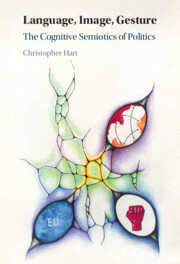3 - Schematisation
Published online by Cambridge University Press: 08 January 2025
Summary
The chapter focusses on schematisation – the image-schematic structuring of events in conceptualisation. Image schemas are defined as representations of recurrent patterns of experience which are called up in discourse to constitute our basic understanding of the situation or event described. The different domains of experience in which image schemas arise are considered alongside their ideological role in the discursive construction of events. Two case studies are presented. The first examines the motion event in media discourses of immigration. It highlights a number of conceptual parameters along which conceptualisations of immigration may depart from a basic model of motion, including in manner of motion and configuration of the ground, quantification and plexity in the figure, and the rate and iteration of the motion encoded, and considers the implications of these departures for ideology and the legitimation of hostile immigration policies. The second focusses on schematisation in media coverage of a Black Lives Matter protest. In a comparative analysis of two texts it shows the patterns of conceptualisation implicated in realising the protest paradigm in media reporting.
Keywords
Information
- Type
- Chapter
- Information
- Language, Image, GestureThe Cognitive Semiotics of Politics, pp. 48 - 77Publisher: Cambridge University PressPrint publication year: 2025
